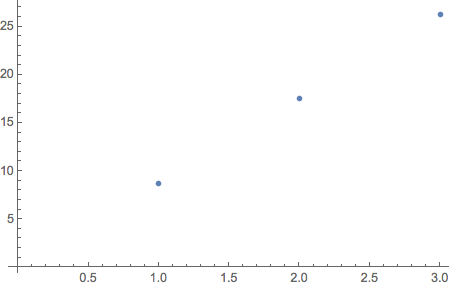This is not a answer, but an extended comment.
Here is your code cleaned up (I reduce the number of iterations from 10 to 3 to save space).
β1 = 0.;
β2 = N[Pi];
β3 = 0.;
a[t_] =
{{E^(I*β1 + I*β3)*Cos[β2*t], E^(I*β1 - I*β3)*Sin[β2*t]},
{(-E^((-I)*β1 + I*β3))*Sin[β2*t], E^((-I)*β1 - I*β3)*Cos[β2*t]}} // Chop
{{1. Cos[3.14159 t], 1. Sin[3.14159 t]}, {-1. Sin[3.14159 t], 1. Cos[3.14159 t]}}
Note that there are no complex values.
tu = Module[{t = 0.},Table[t += 1. + TimeUsed[]; Print[a[t]]; i, 3]]
{8.7486, 17.4973, 26.2461}
ListPlot[tu]
The printed values of the matix a[t] are all real-valued, but are not captured by your algorithm. They could had by making a simple modification.
Module[{t = 0.}, Table[t += 1. + TimeUsed[]; a[t], 3]]
{{{-0.74568, 0.666305}, {-0.666305, -0.74568}}, {{0.112157, -0.99369}, {0.99369, 0.112157}}, {{0.578378, 0.815769}, {-0.815769, 0.578378}}}
However, I can not understand from your question how you expect to make a plot of a list of 2 x 2 matrices. Can you make your intent clearer?


